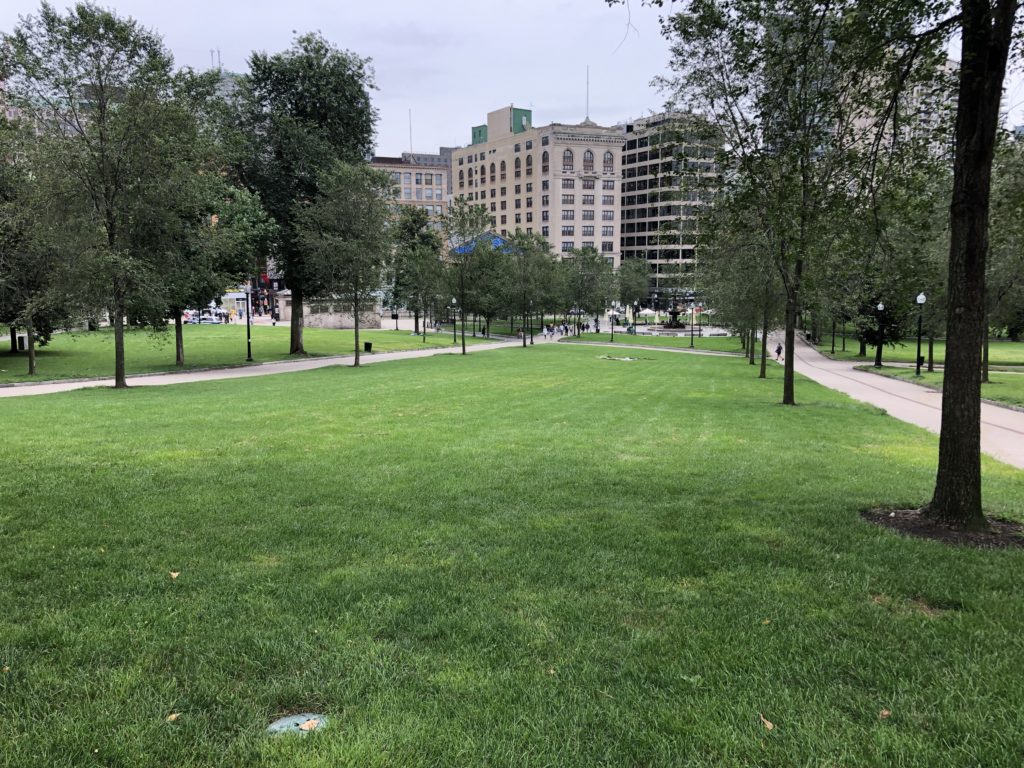
Our first full day in Boston began at the place where the largest crowd ever to gather in the colonies up to that time, gathered in October 1740. They gathered at the Boston Common, and they gathered to hear George Whitefield, perhaps the greatest evangelist ever to preach in the United States…ever. The population of Boston at the time was about 23,000, and it’s estimated 25,000 gathered in the Boston Common to hear Whitefield.
Some mark the beginning of the Great Awakening as 1734, when Jonathan Edwards began to the see the sparks of revival in his congregation in Northampton, Massachusetts. Edwards wrote an account of how people were dramatically converted in his A Narrative of Surprising Conversions. But no one disputes that by 1740, as George Whitefield made his tour through New England, the fire of revival was raging, and Whitefield was without a doubt the best at stoking the fire.
But to suggest, as secular historians do and must, that Whitefield’s power was in manipulating people’s emotions is like suggesting Michael Jackson was the King of Pop because he had a good voice. People hearing Whitefield preach were moved not by a man but by God moving through a man. The eyewitness accounts of the responses to Whitefield’s sermons sound like a Benny Hinn service—people weeping, falling out in the Spirit and lying motionless for hours, and crying out, “What must I do to be saved?”
And remember, this is happening in the midst of the Enlightenment, when Rationalism reigned supreme. It was also happening at a time in the colonies where religious observation was waning, and people’s love for God had grown cold. It didn’t make sense to many, including ministers, many who opposed it, but as Jesus said, the Holy Spirit is like the wind, and He goes where He wants. John 3:8. He is not a power to be harnessed but a Person to honored.
Others preached during the Great Awakening and saw similar response; Gilbert Tennant, John and Charles Wesley, and David Brainerd are some examples, but none were as effective as Whitefield.
After Boston Common, we followed the Freedom Trail to the Granary Burying Ground, where we saw the tomb of Samuel Sewell (and the tombs of Paul Revere and Sam Adams, as well), of Salem Witch Trial infamy, but more about him later. We stopped at the Old South Meeting House-not to be confused with the Old South Church or the New Old South Church-where Thomas Prince-not to be confused with the Artist Formerly Known as Prince-was the pastor during the Great Awakening, and where so many people packed into the building to hear George Whitefield, a panic that the the upstairs gallery was collapsing led to a stampede and the death of five people.
After lunch, the Freedom Trail led us, without comment, past the spot where Cotton Mather once lived at the corner of Hanover and N. Bennet streets. It took some sleuthing and serendipity for your GSB team to find the spot; it is now occupied by a 7-Eleven store. I’ve written about Cotton Mather here in relation to the Small Pox vaccine, and will write about him more in the days to come.
We then followed the Freedom Trail to the Old North Church—not to be confused with the Old North Meeting House where Cotton Mather was the pastor for 43 years. In the Old North Church a plaque on the wall recounted that Charles Wesley had preached there in September and October 1736. Our last stop was at Copp’s Hill Burying Ground and specifically the Mathers’ tomb, where Cotton, his father, Increase, and son, Samuel, are all buried.
A pesky drizzle followed us all day and by the end of the day my leather Tommy Bahama loafers were soaked through. Fearing if we continued I might get Trench Foot-not to be confused with Athlete’s Foot-we decided to head back to the hotel.
Until tomorrow. GS
